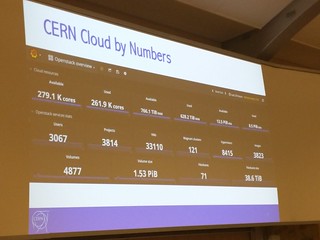There’s some drama going on in the news in Kenya right now. Without going into all of the detail (it’s quite a soap opera) one of the characters in the drama is one Miguna Miguna. (Yes, that’s really his name.)
Weirdly, I have been acquainted with Miguna for several years. He used to come to my Kenya website, say awful things about pretty much everyone, and then threaten to sue me when anyone said anything at all about him. Even when they had documented evidence. Like about his time in prison for opposing the Moi government, and other details that are conspicuously absent from his Wikipedia page.
But I digress.
One of the details of great interest to me is his citizenship. At some point, he acquired Canadian citizenship while in exile from Kenya (again, due to his political activism). The constitution says pretty clearly (and, as a lawyer, one would think he’d know this) that if you acquire foreign citizenship, you lose your Kenya citizenship. Read it for yourself. And you must apply for reinstatement, if you want it. Kenya does not automatically recognize dual citizenship, although there is a process you can go through to gain it, if you’re in that position.
Now, this last part was news to me, and so I’ve been reading over the last few days. Perhaps I could apply for reinstatement of my dual citizenship?
The 1991 constitution, I vaguely remember, introduces some language that eliminates dual citizenship. However, everything I can find about it now says that the only substantive change in that revision was the abolishment of the one-party state.
This led me to dig some more, because I have always believed that I had dual citizenship when I was born. I was born in Kenya to USA citizen parents.
Turns out, the 1963 constitution does not recognize Jus Soli – the notion that you’re a citizen of the bit of dirt you’re born on. Turns out, that’s actually somewhat uncommon, and mostly only recognized in the Americas. Not in Europe, Africa, or Asia, where (for the most part) you are a citizen only if your parents (or, in most cases, one of them) was a citizen.
So, although I have believed all my life that I’m a citizen of Kenya by birth, it turns out, legally, I never was. And, of course, the 2010 constitution makes it impossible for me to have that citizenship (re)instated, even if I had been, as I would have to reside in Kenya for 7 years, which is not practical at this stage in my life. And, as someone who was not, legally, born a citizen, I’d have to renounce my US citizenship as part of that process.
This is odd. Practically speaking, it makes no difference. I have never had enough knowledge of local politics to want to vote. I can still travel to Kenya without a visa. And I still have my childhood and my memories. It makes no practical difference whatsoever.
But I still feel like I’ve lost a part of who I am. Or, something that I always believed I was.
 It took me very little time to get running, following the instructions on the website. Indeed, the longest part of the entire process was the initial Raspberry Pi operating system installation. The actual Pi Hole installation took maybe 10 minutes.
It took me very little time to get running, following the instructions on the website. Indeed, the longest part of the entire process was the initial Raspberry Pi operating system installation. The actual Pi Hole installation took maybe 10 minutes.






